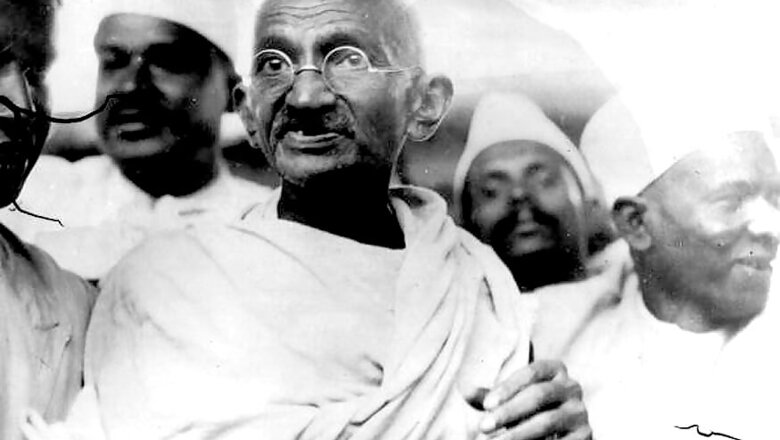
views
Mahatma Gandhi, fondly known as Bapu in India, was a champion of nonviolent resistance who successfully led the campaign for India's independence from British Rule. Gandhi used to live in South Africa to fight against injustice and class division.
Gandhiji first employed non-violent civil disobedience as an expatriate lawyer in South Africa during the resident Indian community's struggle for civil rights. On his return to India, he would set about organising peasants, farmers, and urban labourers to protest against excessive land-tax and discrimination.
Soon, he assumed leadership of the Indian National Congress in 1921, and led nationwide campaigns for various social causes and for achieving Swaraj or self-rule.
Gandhi arrived in Durban aboard SS Safari in 1893 and soon after became the leader of the South African Indian community.
Notably, Gandhi spent 21 years in South Africa, where he developed his political views, ethics and politics.
Here are details on Mahatma Gandhi and his tryst with South Africa:
1. Upon his arrival, he faced discrimination for his skin colour and heritage. He was not allowed to sit with European passengers in the stagecoach and told to sit on the floor near the driver, then beaten when he refused.
2. Furthermore, a magistrate of a Durban court ordered Gandhi to remove his turban, which he refused to do. Also once Gandhi was kicked by a police officer out of the footpath onto the street without warning because Indians were not allowed to walk on public footpaths in South Africa.
3. Gandhi formed the Natal Indian Congress in 1894. This organisation led non-violent protests against the oppressive treatment of the white people towards the native Africans and Indians.
4. In 1896, he gathered 800 Indians and took them back to South Africa where they were welcomed by an irate mob and Gandhi was injured,
5. Gandhi gathered around 1,100 Indians and organised the Indian Ambulance Corps for the British during the 1899 Boer War. However, ethnic discrimination and torture on Indians continued.
6. Gandhi set up Phoenix Farm near Durban, where he trained cadres on non-violent Satyagraha or peaceful restraint. Phoenix Farm is considered as the birthplace of Satyagraha.
7. Gandhi organised the first Satyagraha campaign to protest against the Transvaal Asiatic ordinance that was constituted against the local Indians in 1906.
8. In 1908, he was sentenced to jail for organising non-violent movements. However, after he met with General Smuts, a British Commonwealth statesman, he was released.
9. Gandhi organised a non-violent resistance campaign in Transvaal against the oppression that Indian minors faced and led around 2,000 Indians across the Transvaal border.
10. He also fought against the nullification of non-Christian marriages in 1913. In fact, after black South Africans gained the right to vote in South Africa (1994), Gandhi was proclaimed a national hero.




















Comments
0 comment